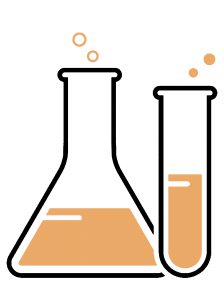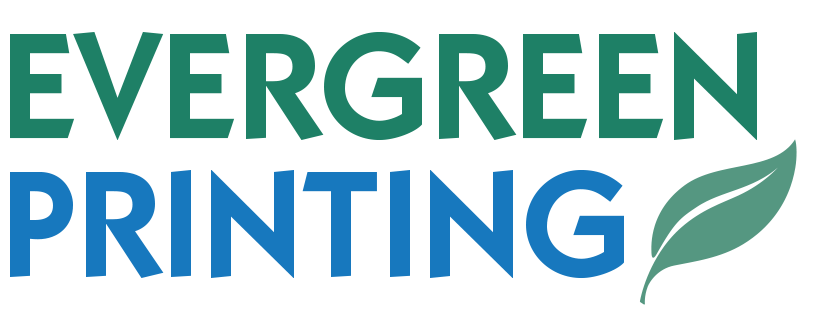There are a variety of chemicals used in print shops. Although most of the attention and marketing begins and ends with inks, minimizing the environmental impact of print shop chemicals is even more important. Chemicals include those used in the processing of film and/or printing plates, fountain solutions, ink additives, blanket/roller washes (the main solvent to clean ink), printing plate cleaners, metal cleaners and desensitizers, glaze removers (to reduce buildup on printing press rollers), roller conditioners, chemicals used to fix low spots on printing blank ets, and chemicals used to make pads and carbonless paper sets.
ets, and chemicals used to make pads and carbonless paper sets.
Minimizing the environmental impact of pressroom chemicals is a worker health & safety issue just as much as it is an environmental issue because workers have the greatest exposure to these toxic chemicals. Efforts to reduce the number of and toxicity of printing industry chemicals are not substitutes for having adequate ventilation and wearing personal protective equipment (PPE). My shop is well-ventilated and has air filtration. Moreover, I wear reusable nitrile or butyl gloves when handling chemicals and wear a half-mask respirator with organic vapor cartridges when appropriate. These practices stand in stark contrast to printing industry standards; most print shops don’t bother to educate their employees about chemical exposure or provide them with adequate PPE.
My commitment to providing the safest possible workplace and minimizing the impact of printing industry chemicals on the environment is unsurpassed. The implementation of this commitment is straightforward:
(1) Eliminate as many classes of pressroom chemicals as possible.
(2) When chemical classes cannot yet be eliminated, reduce their usage and/or replace them with less toxic alternatives.
The effectiveness of this implementation hinges on my ability to assess the toxicity of pressroom chemicals and have a willingness to try new products and processes. Assessing the toxicity of chemicals is not an easy task given the knowledge of chemistry required and the facts that chemical companies can’t guarantee the purity/composition of their ingredients and are often less than forthright in their reporting. I educate myself by being familiar with safety data sheets/SDSs (information chemical manufacturers are required to publish about their products), reading information about printing industry chemicals, attending workshops organized by local occupational and public health agencies, and developing relationships with industrial hygenists when I have unanswered questions.
(1) Eliminate as many classes of pressroom chemicals as possible: This is the preferred objective and can be accomplished with equipment upgrades, using physical rather than chemical solutions to solve problems, and having a cleaning regimen that prevents equipment from getting too dirty.
a) Equipment/Process Upgrades: I have upgraded all press dampeners to Kompacs. In addition to much less paper waste and higher quality, Kompacs do not require isopropyl alcohol (an environmental pollutant and workplace health hazard) or alcohol replacement chemicals in fountain solution. The result is that I haven’t used isopropyl alcohol or alcohol substitutes for over 25 years. Also, I often use computer to plate (CTP) metal plates for my larger offset press, bypassing the need for film and chemicals used for film development.
b) Physical Rather Than Chemical Solutions To Problems: There is a pressroom chemical called blanket fix that, when applied with a small brush, raises the surface of the printing blanket (a rubberized material that receives the image from the plate and transfers it to the paper) to compensate for low spots on the blanket. Low spots develop because of worn blankets and/or when printing on envelopes because envelopes consist of several thicknesses of paper. I rotate and retire printing blankets before they develop low spots on flat sheets. However, low spots in envelope printing is unavoidable. Rather than use blanket fix, which is mostly dichloremethane or methylene chloride (one of, if not the most, toxic chemical in pressrooms), I put paper-based tape on certain areas of the impression cylinder. This solves the problem almost all of the time, thereby reducing the use of blanket fix by over 95%.
c) Having a Cleaning Regimen That Prevents Equipment From Getting Too Dirty: I am able to eliminate classes of chemicals just by maintaining my equipment and keeping it clean. For examples, I have eliminated rubber rejuvenators (containing toluene, methylene chloride, and propylene glycol t-butyl ether) and metal cylinder cleaners (containing ethylene glycol and phosphoric acid) from my pressroom. Caring well for press rollers and replacing worn rollers eliminates the need for rubber rejuvenator and reduces the need for deep cleaning rollers. After every press washup, I follow with warm water and then a water/distilled vinegar solution as a non-toxic conditioner for rollers. Also, instead of letting cylinders get too dirty and then having to periodically use strong cylinder cleaners, I keep them clean and therefore don’t need to use toxic metal cylinder cleaners.
(2) When chemical classes cannot yet be eliminated, reduce their usage and/or replace them with less toxic alternatives: When a chemical cannot yet be eliminated from the pressroom, safer formulations/alternatives can often be utilized.
a) Roller and Blanket Wash: The main solvent used in offset printing is blanket/roller wash to remove printing ink from blankets, rollers, and ink fountains. Since I began printing almost 30 years ago, I have consistently sought the safest and lowest VOC blanket/roller washes available. VOCs, or volatile organic compounds, are chemical pollutants emitted into the air. The safer formulations that I use may be more expensive and may not work as well as harsher products, but this is a trade-off I’m willing to accept. I have always used blanket/roller washes without toluene, xylene, trimethyl benzene, methylene chloride, and 2-butoxyethanol/ethylene glycol monobutyl ether. For cleaning rollers and ink fountains, I currently use a multi-step process. I start with a zero VOC, soy-based methyl ester (100% distilled soybean oil with a food-grade surfactant) that has no ingredients found on the IARC, NTP, OSHA, NIOSH, CERCLA/SARA, TSCA, or California Proposition 65 chemical lists. This removes over 95% of the ink from the rollers and ink fountain. However, it doesn’t remove all the ink and leaves an oily residue even when followed with water. So, I then use a little of my blanket/roller wash blend (consisting of 40% less toxic petroleum roller wash, 40% water, and 20% acetone) to remove the rest of the ink and residue. I follow this with warm water and then a water/distilled vinegar mixture to complete the press washup. The result is that I have reduced the amount of petroleum-based chemicals used in printing press washups by more than 90% and the press rollers last longer.
b) Fountain Solution: This product, made mostly of water, wets the printing plate during printing so ink adheres only to the desired areas of the plate. I use fountain solutions that are safer to work with and have a lower environmental impact. I have already mentioned that isopropyl alcohol and alcohol substitutes have been eliminated from my pressroom for over 25 years. Also, I seek formulations with lower VOCs and no ethylene glycol. Currently, I am using a low VOC formulation that does not contain class I or II ozone depleting substances nor any ingredients listed on IARC, NTP, OSHA, NIOSH, ACGIH, CERCLA/SARA, or California Proposition 65 chemical lists.
c) Printing Plate Cleaners: These do exactly what it sounds like, clean ink off metal printing plates so they can be preserved and stored until a reprint is ordered. I have eliminated plate cleaners that include dangerous chemicals such as ethylene glycol monobutyl ether/2-butoxyethanol, trimethyl benzene, and phosphoric acid. Instead, I use a low VOC plate cleaner with no ingredients listed by IARC, NTP, CERCLA/SARA, OSHA, or California Proposition 65 chemical lists.
d) Roller Deglazers/Detergents: These are sometimes needed to remove glaze from and to deep clean press rollers. Caring well for the rollers means I am able to significantly reduce the need to deep clean rollers. When I have to, I use a zero VOC relatively safer product.
